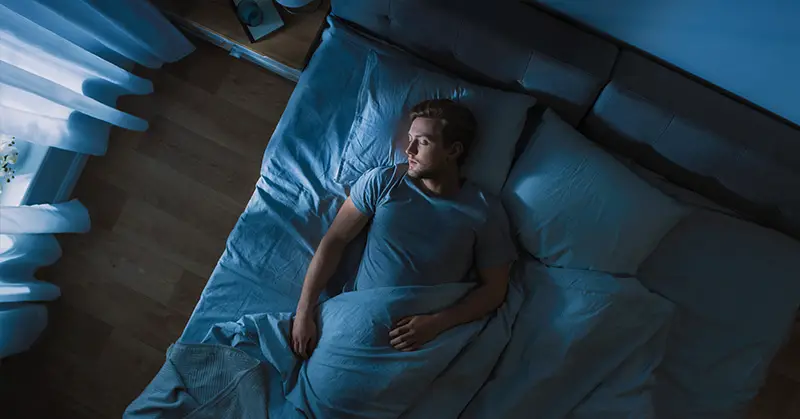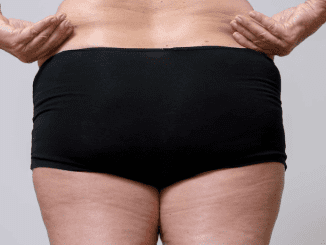Have you ever been drifting off to sleep only to be jolted awake by a sudden body jerk? It’s a common experience that can leave you feeling startled. This phenomenon, known as a hypnic jerk, is surprisingly common—affecting 60 to 70% of people, according to a 2016 study. But what exactly causes this involuntary movement? In this article, we’ll explore the science behind hypnic jerks, the different stages of sleep, and why these jerks tend to occur.

Understanding the Stages of Sleep
Before diving into the causes of hypnic jerks, it’s essential to understand the sleep cycle. Sleep isn’t a single, uniform process; it’s a series of stages that the body transitions through multiple times each night.
Stage One: The Onset of Sleep
This is the initial phase when you first start nodding off. It’s a brief period, lasting just a few minutes, where your body begins to slow down:
- Heartbeat and breathing slow.
- Eye movements reduce.
- Muscles relax, though occasional twitches can still occur.
- Brainwaves begin to shift from wakefulness to slower patterns.
This is the stage where most hypnic jerks happen, as the body transitions from wakefulness to light sleep.
Stage Two: Light Sleep
This is the next phase, characterized by light sleep, as the body further prepares for deeper rest:
- Heartbeat, breathing, and body temperature decrease.
- Eye movements stop completely.
- The brain slows down, though bursts of electrical activity still occur.
Stage two acts as a buffer before deeper sleep, allowing the body to gradually unwind.
Stage Three: Deep Sleep
This is the most restorative phase of the sleep cycle, where the body achieves deep rest:
- Heart rate and breathing reach their lowest levels.
- Muscles are fully relaxed, making it difficult to wake up.
- This stage is crucial for feeling refreshed the next day.
Hypnic jerks usually don’t occur in this stage, as the body is already in deep sleep.
REM Sleep: The Dream Phase
REM (Rapid Eye Movement) sleep occurs about 90 minutes after falling asleep:
- Eyes move rapidly beneath closed eyelids.
- Brain activity is similar to wakefulness, while dreams are most vivid.
- Heart rate and breathing increase, becoming irregular.
During REM sleep, the body enters a state of temporary paralysis, preventing you from physically acting out your dreams. By this point, hypnic jerks are highly unlikely, as the body is in a deep state of rest.
What Are Hypnic Jerks?

Source: Shutterstock
Hypnic jerks, also known as hypnagogic jerks or sleep starts, are involuntary muscle spasms that occur as the body transitions from wakefulness to sleep. They can happen suddenly, often accompanied by a sensation of falling or tripping. But why does this happen?
The Mechanism Behind Hypnic Jerks
Hypnic jerks occur when the nervous system gets mixed signals during the transition from wakefulness to stage one of sleep. According to Rafael Pelayo, a sleep specialist at Stanford Sleep Medicine Center, these jerks are the result of certain parts of the nervous system remaining active while others begin to shut down for sleep. It’s almost like the body is trying to adjust the gears of a car—sometimes there’s a slight “misfire” as the body eases into sleep.
Pelayo also notes that hypnic jerks are more common when the body is sleep-deprived. In such cases, the body tries to skip the usual progression of sleep stages, moving directly from stage one to REM sleep. This “fast-tracking” of the sleep process may trigger a hypnic jerk, which serves as the body’s way of saying, “You need to rest!”
Are Hypnic Jerks Dangerous?
While hypnic jerks can be startling, the good news is that they are generally harmless. They don’t pose any health risks and are often just a sign that the body is transitioning into sleep too quickly.

Source: Shutterstock
Why Do Hypnic Jerks Feel Scary?
The sensation of falling is a natural human reflex designed to trigger a survival response. It’s why you might wake up feeling disoriented or with your heart racing after experiencing a hypnic jerk. This reaction is a fight-or-flight response—an evolutionary trait that protected our ancestors from real dangers.
If you find hypnic jerks disturbing, remind yourself that they’re normal and temporary. Try focusing on slow, deep breathing to calm your body and ease back into sleep.
Common Triggers for Hypnic Jerks
While hypnic jerks can happen to anyone, certain factors make them more likely:
1. Sleep Deprivation
Not getting enough sleep is a leading cause of hypnic jerks. When you’re exhausted, your brain tries to enter REM sleep faster than usual, increasing the likelihood of these jerks.

Source: Shutterstock
2. Caffeine and Stimulants
Caffeine and other stimulants can keep the brain active when the body is trying to rest. This mismatch in energy levels can contribute to sudden jerks as the nervous system struggles to wind down.
3. Stress and Anxiety
Stress causes muscle tension, which can make it harder for the body to relax. As you finally begin to drift off, the residual tension may result in an abrupt muscle twitch.
4. Physical Exhaustion
Overexertion during the day, whether from exercise or manual labor, can also increase the chance of hypnic jerks. Tired muscles are more prone to spasms as they attempt to relax during sleep.
5. Alcohol Consumption
While alcohol might make you feel drowsy, it can disrupt the natural progression of sleep stages. This can lead to an increase in hypnic jerks, especially during the first stages of sleep.

Source: Shutterstock
How to Reduce Hypnic Jerks
If hypnic jerks are affecting your sleep quality, there are steps you can take to minimize their occurrence:
1. Prioritize Regular Sleep
Aim for 7-9 hours of sleep each night to reduce overall fatigue. Consistent, sufficient rest can help your body transition smoothly between sleep stages.
2. Limit Stimulants
Try to avoid caffeine, nicotine, and other stimulants several hours before bedtime. This gives your nervous system a chance to slow down naturally, reducing the likelihood of jerks.
3. Manage Stress
Engage in relaxation techniques like meditation, deep breathing, or progressive muscle relaxation before bed. These activities help ease muscle tension and create a calm environment for sleep.
4. Stay Active, But Not Too Late
Regular physical activity can improve sleep quality, but avoid intense exercise right before bed. Instead, opt for a light walk or gentle stretches to unwind your muscles.

Source: Shutterstock
Conclusion: Hypnic Jerks Are a Natural Part of Sleep
Hypnic jerks, while surprising, are a normal part of the transition from wakefulness to sleep. They’re usually harmless and often serve as a signal from the body that it needs rest. By understanding the triggers and adopting better sleep habits, you can minimize the frequency of these involuntary movements.
So, the next time you feel that sudden jolt as you’re drifting off, remember—your body is just adjusting itself to a state of rest. It’s not something to fear but rather a reminder that sleep is essential for your well-being.


